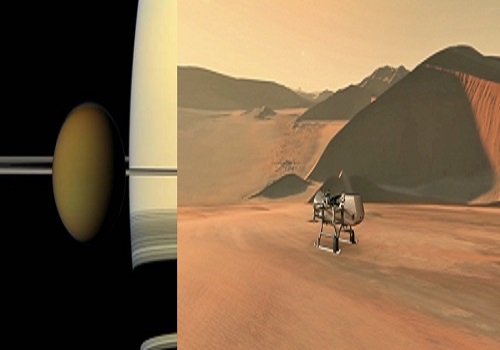NASA mission to Saturn`s moon may unravel chemistry leading to life

An upcoming NASA mission to Saturn's giant moon Titan aims to discover the development of life in the universe, the US space agency said.
The mission called Dragonfly is due to launch in 2027, and will reach Titan in 2034.
Dragonfly carries an instrument called the Dragonfly Mass Spectrometer (DraMS), which will shed light on the kinds of chemical steps that occurred on Earth that ultimately led to the formation of life, called prebiotic chemistry.
Titan's abundant complex carbon-rich chemistry, interior ocean, and past presence of liquid water on the surface make it an ideal destination to study prebiotic chemical processes and the potential habitability of an extraterrestrial environment, the mission officials said in a statement.
DraMS will allow scientists back on Earth to remotely study the chemical makeup of the Titanian surface.
"We want to know if the type of chemistry that could be important for early pre-biochemical systems on Earth is taking place on Titan," Dr Melissa Trainer of NASA's Goddard Space Flight Center, Greenbelt, Maryland, said in a statement.
To accomplish this, the Dragonfly robotic rotorcraft will capitalise on Titan's low gravity and dense atmosphere to fly between different points of interest on Titan's surface, spread as far as several miles apart.
This allows Dragonfly to relocate its entire suite of instruments to a new site when the previous one has been fully explored, and provides access to samples in environments with a variety of geologic histories.
At each site, samples less than a gram in size will be drilled out of the surface by the Drill for Acquisition of Complex Organics (DrACO) and brought inside the lander's main body, to a place called the "attic" that houses the DraMS instrument.
There, they will be irradiated by an onboard laser or vaporised in an oven to be measured by DraMS.
"DraMS is designed to look at the organic molecules that may be present on Titan, at their composition and distribution in different surface environments," Trainer said.
Organic molecules contain carbon and are used by all known forms of life. They are of interest in understanding the formation of life because they can be created by living and non-living processes.
























